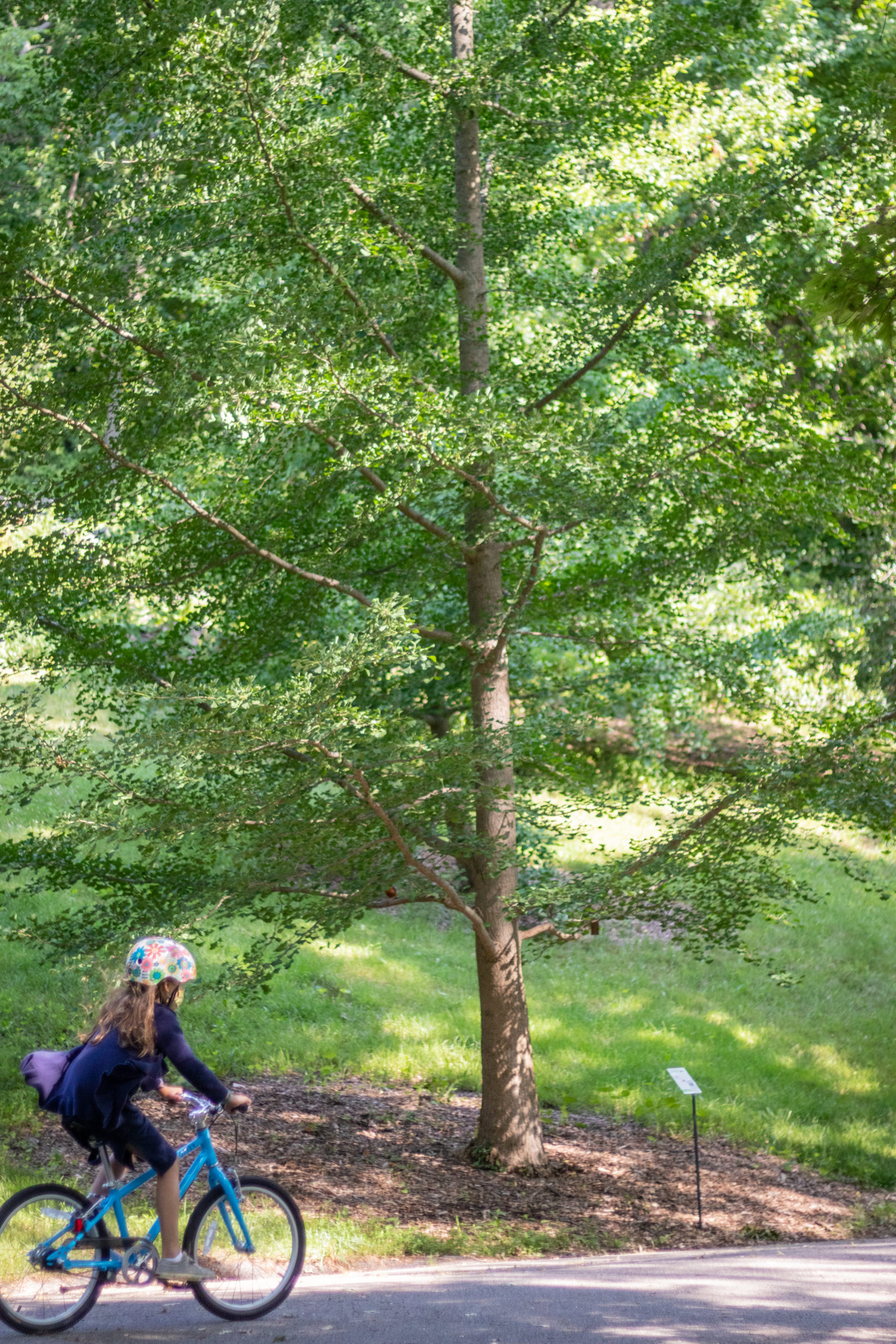
1989 EASTERN CHINA
Expedition
This ginkgo was collected, in 1989, from one of the few presumed wild populations of this species in China.
In the early 20th century, American and European botanists believed that the ginkgo, while common in cultivation, was extinct in the wild. These distinctive trees were often seen in gardens and around temples in China, Japan, and Korea. Many of the cultivated specimens were hundreds of years old. Given the prominence of these trees, it was curious that field botanists had never reported seeing them growing in the wild.
Then, in 1915, a prolific American plant collector named Frank Meyer reported that he had visited a mountainous valley in southeastern China where he saw ginkgos growing freely. The trees were so abundant that neighboring communities cut them for firewood. When the Arnold Arboretum’s first director, Charles Sprague Sargent, described Meyer’s discovery the following year, he suggested that the trees might have escaped from a cultivated source. The discovery was nevertheless exciting. “It is exceedingly interesting, whatever may be the history of these trees, to find that there is at least one place in China where the Ginkgo grows in the woods and reproduces itself spontaneously,” Sargent wrote.
More than 60 years later, in 1989, Arboretum researcher Peter Del Tredici visited the same location in northwestern Zhejiang Province: a mountain called Tian Mu Shan. Over the intervening years, Chinese botanists had continued studying the ginkgos and advocated for their protection with a nature preserve. Del Tredici worked with two Chinese colleagues—Ling Hsieh (of the Zhejiang Forestry Department) and Yang Guang (of the Nanjing Botanical Garden)—to inventory ginkgos within the reserve. Del Tredici also collected seed from the ginkgos, which he brought back to the Arnold Arboretum. This tree, planted on the southern slope of Peters Hill, was grown from Del Tredici’s collections.
More recently, genetic evidence has been brought to bear on the question of whether the ginkgos at Tian Mu Shan are, in fact, wild. In 2008, a Chinese researcher named Wei Gong, then at Zhejiang University, worked with colleagues to study wild-type ginkgo populations. Their research confirmed that the Tian Mu Shan ginkgos had the level of genetic diversity that would be expected for a wild population. Three additional populations in southwestern China had similar levels of diversity.
Del Tredici has also visited and collected seeds from ginkgos in two other wild-type populations in Guizhou Province. More than forty ginkgos at the Arboretum originated from his efforts. These trees form the core of the Arboretum’s ginkgo collection, which is nationally accredited by the Plant Collections Network. The collection is an essential resource for conservation and research.
Click here to read a transcript of the audio segment below.
Arboretum scientist Peter Del Tredici collected the seed for this plant, and has studied ginkgos for over three decades. Hear about his work below.
China
Viewing this plant in-person? Look for these defining characteristics:
1

2

3

4

About Our Collection
Fun Facts
Stats
- Living Specimens
- Specimens Dead or Removed
- First Addition
- Most Recent Addition
- Tallest Specimen




101 Living Specimens
| Plant ID | Accession Date | Received As | Origin | Source |
|---|---|---|---|---|